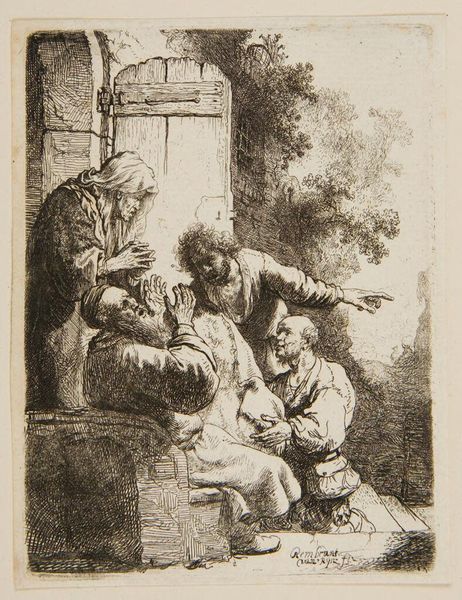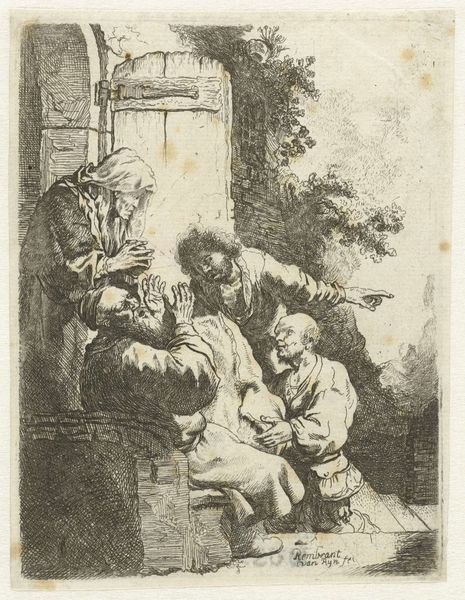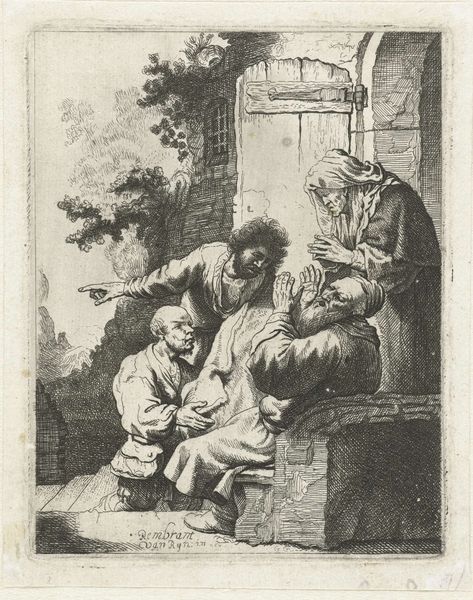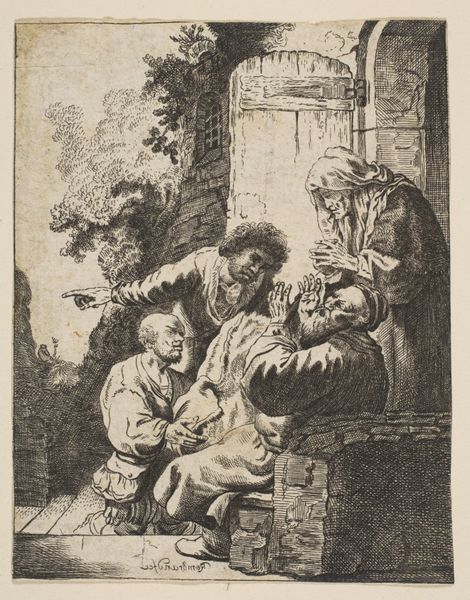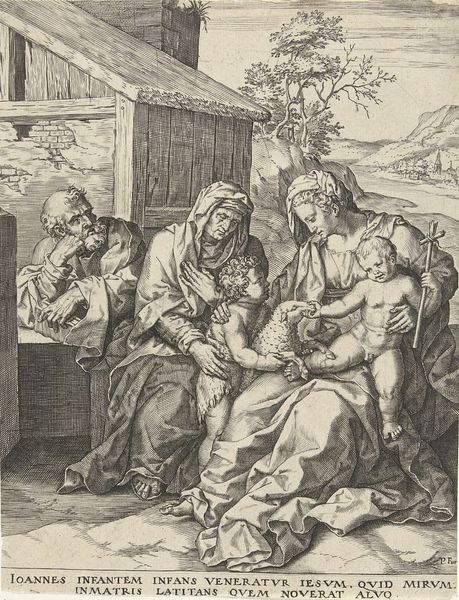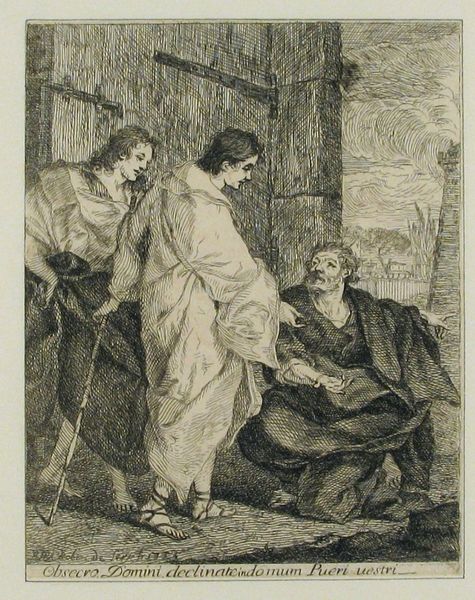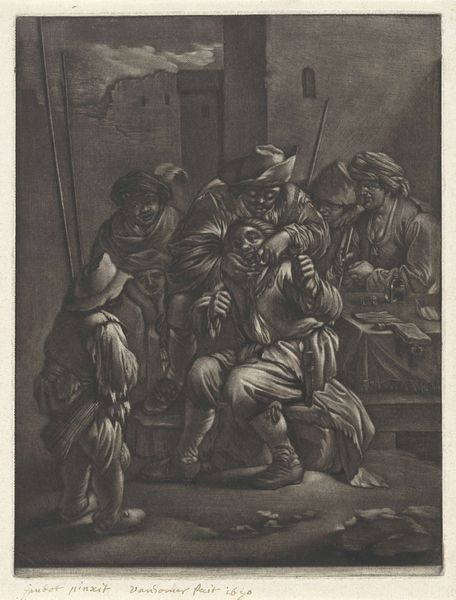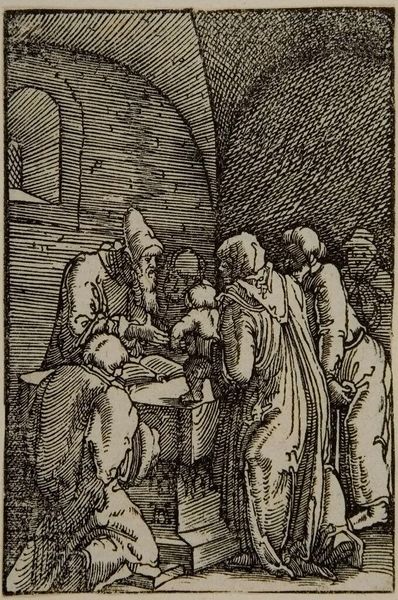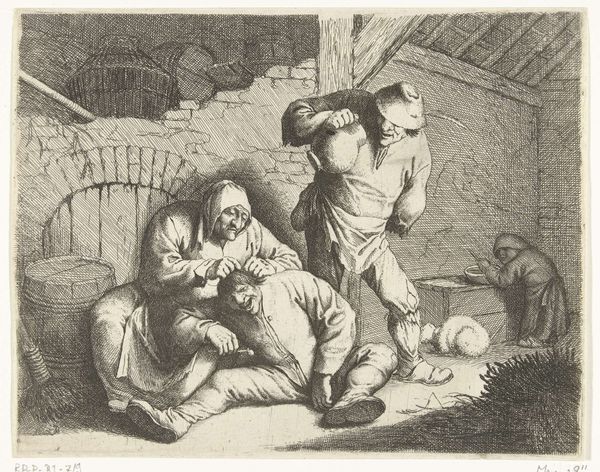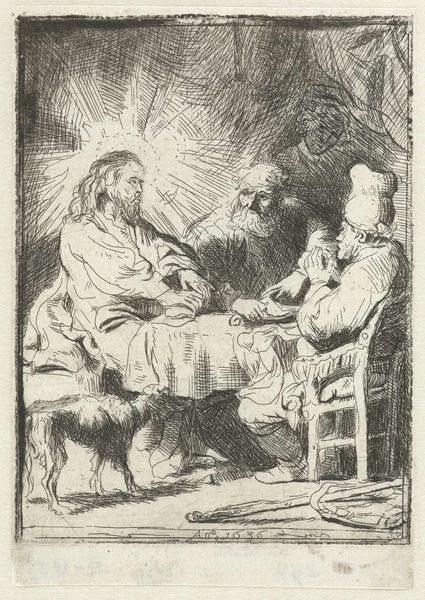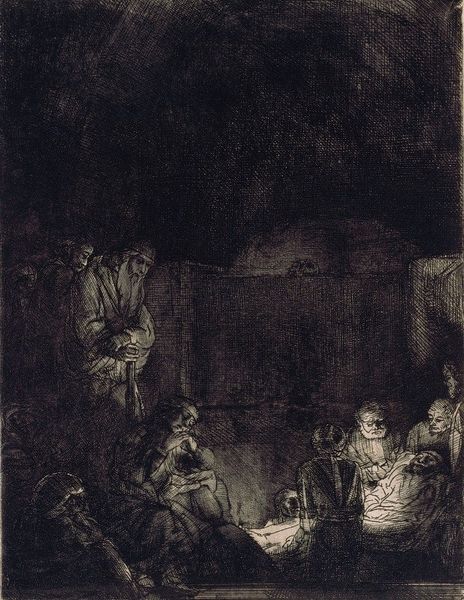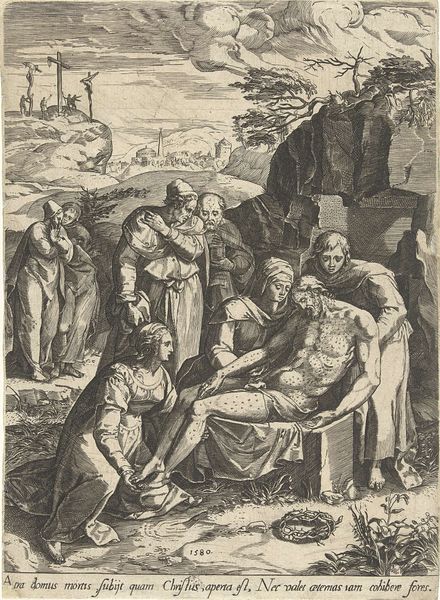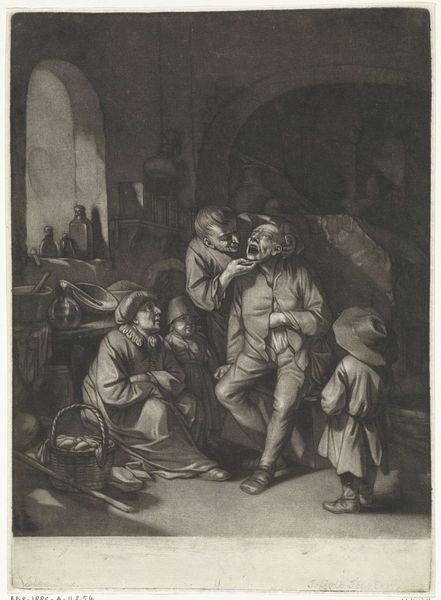
print, etching, engraving
#
baroque
# print
#
etching
#
figuration
#
history-painting
#
engraving
Copyright: Public domain
Curator: Rembrandt van Rijn’s 1633 etching, "Joseph’s Coat Brought to Jacob", powerfully renders a tragic biblical narrative. Editor: There's something so immediately gripping about the raw emotion etched on their faces. The contrast between light and shadow heightens the drama. Curator: Absolutely, Rembrandt masterfully uses light and dark to draw the viewer into Jacob's profound grief upon being presented with the bloody coat of his son Joseph. Think of the social and political context. Rembrandt was making prints for a growing middle class hungry for narratives, particularly those with strong moral lessons. Editor: I find myself considering how Rembrandt chooses to depict these figures within the social strata of his time. Jacob's posture is so broken; it mirrors societal understandings of elderly male vulnerability when confronted with loss, especially along patriarchal lines. Curator: Precisely! Notice the storytelling is less about the sensational violence, but instead directed at representing psychological experience. The poses of the brothers are quite demonstrative, embodying betrayal. These poses link directly to period theater, making this artwork deeply resonant with Rembrandt's audiences, emphasizing moral lessons. Editor: This also gets me thinking about performative grief—specifically patriarchal grief in the religious sphere, with specific racialized implications in Baroque painting, of course—but the vulnerability on display raises important questions about the intersection of gender, religion, and loss. Does it challenge or reinforce patriarchal norms within grief and mourning, you know? Curator: A vital question to consider. The work offers space for this, even within its religious context. That ambiguity, its complexity is really what has sustained Rembrandt’s significance in the canon. Editor: Thinking about how art opens spaces for dialogue, for renegotiations—that’s the lens through which I am finding meaning here today. Curator: An essential takeaway. Thank you for sharing. Editor: Likewise. Thank you for drawing out its cultural relevance with me.
Comments
No comments
Be the first to comment and join the conversation on the ultimate creative platform.
